Comment
-
Comment by Edie Antoinette on December 24, 2007 at 9:03pm
-
That looks nice and I like the way the webpage is set up. Thanks!
-
Comment by Shelley "SoleMann" King on December 24, 2007 at 8:54pm
-
Checkout this link......
http://www.wildernesstheater.com/
-
Comment by Edie Antoinette on December 24, 2007 at 8:52pm
-
"The only memories i have is Mama and Daddy making me and Skip go to sleep because naked people was in the movie..."
LOLOLOLOLOLOL!!!! I can see yall now...lol
-
Comment by Shelley "SoleMann" King on December 24, 2007 at 8:40pm
-
I love this video and that era...We still have a Drive-In in the area....Let me find it for you.
-
Comment by Shelley "SoleMann" King on December 24, 2007 at 8:36pm
-
23rd Street Drive-In
Chattanooga, TN
1600 East 23rd Street
Chattanooga, TN 37404 United States
The 23rd Street Drive-In was open as early as 1950, and was still open in the mid 70's when I last drove by it. I believe it was part of the Martin chain at the time. I never went inside, but it looked large and impressive from the outside. It is now closed, but I don't know what's on the property.
On that property now sits a Captain D's Restaurant and a Bi-Lo Grocery Store...The only memories i have is Mama and Daddy making me and Skip go to sleep because naked people was in the movie.....ROFLMBO
-
Comment by Edie Antoinette on December 24, 2007 at 8:31pm
-
Do you have any drive-in memories Sole?
-
Comment by Edie Antoinette on December 24, 2007 at 8:31pm
-
Did you watch the video? MAN it brings back memories!
-
Comment by Shelley "SoleMann" King on December 24, 2007 at 8:29pm
-
I remember the 23rd street Drive-In, but thats it.
-
Comment by Shelley "SoleMann" King on December 24, 2007 at 8:28pm
-
In Chattanooga there was these Drive-Ins:
Broad Street Drive-In (637 cars) owner J. Solomon
58th. Street Drive-In (500 cars) owner D. Shaw
Look-Out Drive-In (300 cars) owner J. Sadow
Red Bank Drive-In (500 cars) owner J. Solomon
23rd. Street Drive-In (534 cars) owner W.H. Fincher
41 Drive-In (400 cars) owner W.H. Fincher
Sky Way Drive-In (400 cars) Skyway Theatres
-
Comment by Shelley "SoleMann" King on December 24, 2007 at 8:24pm
-
From The Chattanoogan.com
What Used to be There? Forty-one Drive-in
by Harmon Jolley
posted June 26, 2007
In response to a more mobile society, drive-in theaters opened at a rapid rate following World War II. With acreage as an important part of the investment, drive-ins often were located on the perimeters of cities where land was cheap. However, when the popularity of drive-ins began to diminish, the land was soon eyed by developers.
Locally, after being blown down by a wind storm, the Skyway Drive-in on Brainerd Road was redeveloped as Eastgate Mall. The Marbro is now the site of Sam’s Club on Lee Highway. Other drive-ins had similar fates of being converted into other commercial uses.
One “ozoner,” the Forty-one Drive-in Theater, had a different sort of last picture show. If you stand on Fincher Avenue off Ringgold Road, and look towards the East Ridge interchange of Interstate 75, you will be looking at the old theater property. The Forty-one Drive-in’s rise and fall were both due to the automobile.
The Forty-one Drive-in opened on Friday, May 6, 1949. According to the drive-in tribute Web site Cinema Treasures (http://cinematreasures.org/theater/15339/), the theater was built by W.H. Fincher. I could not validate that information at the library. However, this may be connected to the name of Fincher Avenue which bordered the theater property.
The parking lot of the Forty-one could hold up to 600 cars. That’s a lot of potential popcorn profits, but it was a smaller venue than the nearby Skyway, which could park at least 1,040 automobiles. The Forty-one Drive-in’s location was conveniently located to the growing suburbs of East Ridge and Brainerd. All of the traffic between Nashville and Atlanta traveled along Ringgold Road, so tourists might also be numbered among the customers.
To get to the drive-in, a car was a prerequisite. For an unobstructed view of the screen, one could buy a 76C Buick Roadmaster convertible for $3,465.95 at McKinney Buick at 1225 Broad Street. To cash in on the theater promotion of a flat price per carload, one could purchase the “most roomy” Hudson at Austin Motors at 1900 Broad Street. To keep the old flivver maintained, Newton Chevrolet sold a new engine at their dealership at 329 Market Street, while Western Auto sold seat covers for $14.95. Vortex Gas at 415 East Main Street offered a nickel-a-gallon discount if you pumped the gasoline yourself.
A full-page advertisement for the Forty-one ran in the Chattanooga Times during opening week. The theater featured the technology of RCA individual In-a-Car speakers. Like most drive-ins, the Forty-one probably lost some of those each year by people forgetting to remove them when exiting the theater. The Forty-one Drive-in also proclaimed in its advertisement that its machines were operated by union projectionists.
Opening week movies in May, 1949 were as follows, with plots that I summarized from various Internet sources:
THE MAN FROM TEXAS
James Craig, the El Paso Kid, is torn between helping a widow and joining up with bank robbers. I wonder if there was a new schoolmarm or U.S. Marshal; there usually was in a Western. Typical of many drive-ins, the Forty-one showed second-run movies. “The Man from Texas” was from 1948.
SAIGON
A romantic adventure film, also from 1948, starred Alan Ladd and Veronica Lake in a plot that involved aviators taking on a job for a war profiteer.
ADVENTURE ISLAND
The Forty-one Drive-in dropped back to 1947 for this film starring Rory Calhoun. The plot involves a crew that is shipwrecked on an island ruled by the evil character played by Alan Napier (“Batman” TV show’s butler). Sort of “Gilligan’s Island” meets “Batman.”
BRIDE GOES WILD
This one from 1948, really does have a schoolmarm in it. The teacher gets a chance to pursue her dream of becoming a commercial artist for children’s books, only to find that the author is a lush who hates children. June Allyson, Van Johnson, and Hume Cronyn were among the stars.
LONE STAR MOONLIGHT
The clock was turned back to 1946 for this film. A returning soldier played by Ken Curtis (“Gunsmoke’s Festus Haggen) has been planning to convert a radio station that he owned into a television station. However, he learns that his father has squandered his money, so the ex-G.I. has to hold an auction/hoedown to raise funds. Later, he could have called on Marshal Matt Dillon for help. “You betcha, Matthew.”
The Forty-one Drive-in Theater continued to attract customers during the halcyon years for drive-ins, the 1950’s. However, the date of June 29, 1956 portended doom for the theater. That day, the Federal-Aid Highway Act of 1956, also known as the National Interstate and Defense Highways Act, was signed into law by President Dwight D. Eisenhower.
On April 3, 1959, the Chattanooga Times reported the beginnings of the freeway project in Brainerd. A home at 321 South Moore Road was the first east of Missionary Ridge to be razed. The “directional interchange” of I-24 and I-75 was estimated to cost $3.3 million.
The Forty-one Drive-in Theater was in the pathway of the East Ridge interchange of Interstate 75. The theater continued to operate while freeway construction took place. However, by November 2, 1959, the theater’s advertisement noted a limited Friday/Saturday/Sunday schedule due to road construction.
The weekend showing of “John Paul Jones” on November 6, 1959 may have been the swan song of the old Forty-one. The next weekend’s theater listings included a comment for the Forty-one of “closed for the winter.”
It has been a long winter, indeed. The Chattanooga Times of June 6, 1960 included a photograph of the abandoned drive-in alongside the progress of the freeway.
On those mornings when we hear of yet another wreck at the I-75/I-24 directional interchange, how many of us wish that we still had the Forty-one Drive-in Theater instead of freeways.
© 2025 Created by Edie Antoinette.
Powered by
![]()





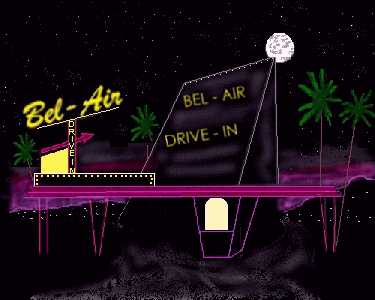
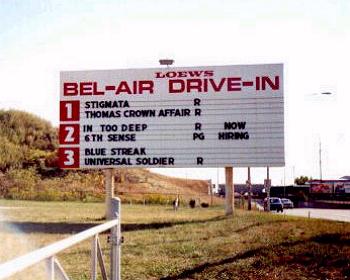
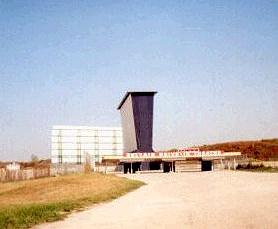
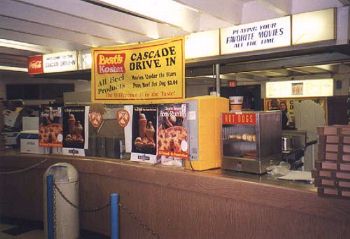
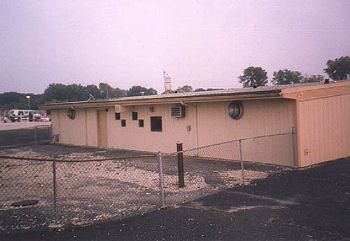
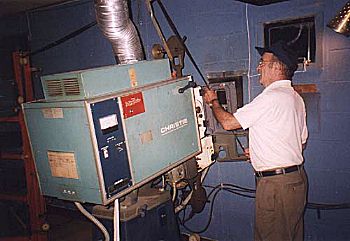
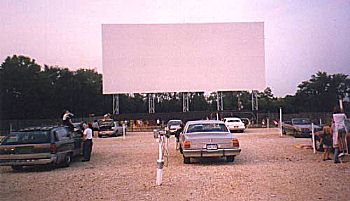







 harness soap, later moving on to selling a complete line of automotive products under the name of the "Whiz Auto Products Company." After Richard Jr. finished school, he took a position with his father's company as general sales manager.
harness soap, later moving on to selling a complete line of automotive products under the name of the "Whiz Auto Products Company." After Richard Jr. finished school, he took a position with his father's company as general sales manager. folks continued to go to motion pictures at their local Theater. From this, his first notion was to create a deluxe gas station, designed like a Hawaiian Village, that would feature a restaurant and outdoor movies where the customers could mingle while their cars were being serviced, utilizing Whiz Auto Products of course!
folks continued to go to motion pictures at their local Theater. From this, his first notion was to create a deluxe gas station, designed like a Hawaiian Village, that would feature a restaurant and outdoor movies where the customers could mingle while their cars were being serviced, utilizing Whiz Auto Products of course! of the screen, they would need to be positioned in a special way. He spent several weeks arranging vehicles in different configurations to solve the visibility problem. The final solution was a series of terraced ramps whose height increased as you parked closer to the screen. This arrangement of ramps was the core of his concept and Richard felt it was strong enough to be patentable, allowing him to collect royalties from future drive-in operators for a period of 17 years, the standard time limit for patents. Or so he thought.
of the screen, they would need to be positioned in a special way. He spent several weeks arranging vehicles in different configurations to solve the visibility problem. The final solution was a series of terraced ramps whose height increased as you parked closer to the screen. This arrangement of ramps was the core of his concept and Richard felt it was strong enough to be patentable, allowing him to collect royalties from future drive-in operators for a period of 17 years, the standard time limit for patents. Or so he thought. On May 16, 1933, the day the patent was granted, work began on constructing the drive-in on Crescent Boulevard in Pennsauken Township, New Jersey. The location is usually reported as Admiral Wilson Blvd. in Camden, but technically the Theater was just over the Camden town line, where the name of the road changes. Opening night was June 6, 1933, and it was known simply as "Drive-In Theater" although the actual name was the "Automobile Movie Theater." Opening night was packed with cars, and the first film ever shown at a drive-in was the 1932 release of "Wives Beware," which was in second-run status at the time. The problem of obtaining first-run films for drive-ins remains to this day! Admission was 25? for each car and an additional 25? for each person, somewhat higher than the prevailing price at the indoor houses at the time, who were also offering double features. Ironically, this has reversed itself over time and drive-ins are usually the only places to see double features today.
On May 16, 1933, the day the patent was granted, work began on constructing the drive-in on Crescent Boulevard in Pennsauken Township, New Jersey. The location is usually reported as Admiral Wilson Blvd. in Camden, but technically the Theater was just over the Camden town line, where the name of the road changes. Opening night was June 6, 1933, and it was known simply as "Drive-In Theater" although the actual name was the "Automobile Movie Theater." Opening night was packed with cars, and the first film ever shown at a drive-in was the 1932 release of "Wives Beware," which was in second-run status at the time. The problem of obtaining first-run films for drive-ins remains to this day! Admission was 25? for each car and an additional 25? for each person, somewhat higher than the prevailing price at the indoor houses at the time, who were also offering double features. Ironically, this has reversed itself over time and drive-ins are usually the only places to see double features today. talking in your car without disturbing anyone, as well as eating in the privacy of your vehicle. Young children could be brought along with their pajamas and sleep in the back seat so you wouldn't need to hire a babysitter. One early drive-in operator staged a "Babysitter Protest" with picketing teenage girls marching around with signs that read "Down with Drive-Ins, More Work for Babysitters." The aged and infirm or severely overweight folks who could not handle the narrow aisles of the indoor houses would also benefit.
talking in your car without disturbing anyone, as well as eating in the privacy of your vehicle. Young children could be brought along with their pajamas and sleep in the back seat so you wouldn't need to hire a babysitter. One early drive-in operator staged a "Babysitter Protest" with picketing teenage girls marching around with signs that read "Down with Drive-Ins, More Work for Babysitters." The aged and infirm or severely overweight folks who could not handle the narrow aisles of the indoor houses would also benefit. It was initially thought that 3 shows a night would be viable, but after only 2 nights this gave way to showing only 2 shows per night, one at 8:45 and another at 10:45 with 2 changes a week. This brings to mind another issue that has changed the film exhibition business greatly. In the old days, it was possible for a small town house or DI to get 2-3 changes a week, which meant that if you were drawing from a small local population, you had something fresh every few days to keep people coming in. Nowadays, it is not unusual for the big studios and distributors to force exhibitors to show a film for a minimum of 4 weeks! Sometimes this can be negotiated down, but it really hurts attendance when most of your audience sees the new release on the first weekend and then you are dead for the next 3 weeks waiting for the next new film. Of course, this led to most Theaters becoming twinned and tripled until the dawn of the Multi-plex and Mega-Plex's we see today. With 15 screens or more, there is always something new to see. The side effect of this of course is that it led to many drive-ins and small neighborhood houses to close down. This was not the only reason for their demise however, more on that later.
It was initially thought that 3 shows a night would be viable, but after only 2 nights this gave way to showing only 2 shows per night, one at 8:45 and another at 10:45 with 2 changes a week. This brings to mind another issue that has changed the film exhibition business greatly. In the old days, it was possible for a small town house or DI to get 2-3 changes a week, which meant that if you were drawing from a small local population, you had something fresh every few days to keep people coming in. Nowadays, it is not unusual for the big studios and distributors to force exhibitors to show a film for a minimum of 4 weeks! Sometimes this can be negotiated down, but it really hurts attendance when most of your audience sees the new release on the first weekend and then you are dead for the next 3 weeks waiting for the next new film. Of course, this led to most Theaters becoming twinned and tripled until the dawn of the Multi-plex and Mega-Plex's we see today. With 15 screens or more, there is always something new to see. The side effect of this of course is that it led to many drive-ins and small neighborhood houses to close down. This was not the only reason for their demise however, more on that later. screen was 30 ft. high and 40 ft. wide and it was 12 feet from the ground. It was housed by a larger structure that was 149 ft. wide, 35 ft. high, and 60 ft. deep. The field was paved with gravel and oiled to keep dust down and discourage mosquitoes. Sound was supplied by 3 six-foot square RCA speakers and could be heard from miles around on some nights! Total cost was published at $60,000 but it was more like $25,000. The all-important concession stand was put in after the first week.
screen was 30 ft. high and 40 ft. wide and it was 12 feet from the ground. It was housed by a larger structure that was 149 ft. wide, 35 ft. high, and 60 ft. deep. The field was paved with gravel and oiled to keep dust down and discourage mosquitoes. Sound was supplied by 3 six-foot square RCA speakers and could be heard from miles around on some nights! Total cost was published at $60,000 but it was more like $25,000. The all-important concession stand was put in after the first week. Although Hollingshead retained his 30% interest in Park-In Inc., he was never again involved in operating a drive-in. He felt that the licensing aspect of the business showed more promise anyway, but unfortunately this was not to be the case. A second drive-in was begun in Weymouth Massachusetts in 1936 and was opened on May 6 of that year. The owners of the Weymouth Drive-In, Thomas DiMaura and James Guarino failed to obtain a license from Park-In however. On July 3rd, legal action was brought against them by Park-In charging patent infringement. Park-In was able to obtain a writ which entitled them to place gate keepers at the Weymouth and collected the entire gate receipts for July 3, 4 and 5 for Park-In. There was subsequent moneys paid, and by the fall the Weymouth partners, AKA Drive-In Theaters Corp entered into a licensing agreement with Park-In.
Although Hollingshead retained his 30% interest in Park-In Inc., he was never again involved in operating a drive-in. He felt that the licensing aspect of the business showed more promise anyway, but unfortunately this was not to be the case. A second drive-in was begun in Weymouth Massachusetts in 1936 and was opened on May 6 of that year. The owners of the Weymouth Drive-In, Thomas DiMaura and James Guarino failed to obtain a license from Park-In however. On July 3rd, legal action was brought against them by Park-In charging patent infringement. Park-In was able to obtain a writ which entitled them to place gate keepers at the Weymouth and collected the entire gate receipts for July 3, 4 and 5 for Park-In. There was subsequent moneys paid, and by the fall the Weymouth partners, AKA Drive-In Theaters Corp entered into a licensing agreement with Park-In. were not, some who were licensed originally began to stop paying their royalties to Park-In due to the un-authorized locations being built in their so-called "protected" territories. This legal chaos continued for several years, with locations being built faster than Park-In could sue them. As a historical note, one these early drive-ins was the Sunrise Auto Theater in Valley Stream, Long Island New York. It was owned by one Michael Redstone, father of the mastermind and head of Viacom, Sumner Redstone. This Theater was the seed of what was to become Northeast Theaters which evolved into National Amusements, which eventually would operate 60 drive-ins and dozens of indoor Theaters over the years. Although Mr. Redstone claimed in his book, "A Passion to Win" that the Sunrise drive-in was "probably the fourth drive-in built in the world," this does not appear to be the case, according to records from back then. It was certainly one of the first 15 to 20 though.
were not, some who were licensed originally began to stop paying their royalties to Park-In due to the un-authorized locations being built in their so-called "protected" territories. This legal chaos continued for several years, with locations being built faster than Park-In could sue them. As a historical note, one these early drive-ins was the Sunrise Auto Theater in Valley Stream, Long Island New York. It was owned by one Michael Redstone, father of the mastermind and head of Viacom, Sumner Redstone. This Theater was the seed of what was to become Northeast Theaters which evolved into National Amusements, which eventually would operate 60 drive-ins and dozens of indoor Theaters over the years. Although Mr. Redstone claimed in his book, "A Passion to Win" that the Sunrise drive-in was "probably the fourth drive-in built in the world," this does not appear to be the case, according to records from back then. It was certainly one of the first 15 to 20 though. The legal case that had the most lasting impact on the business was with the Leows people, which finally made its way up to the First Circuit Court of appeals. This court's decision dealt a stunning blow to Hollingshead's Park-In Company and their ability to collect royalties from any drive-in operator ever again. The court ruled that the patent, which was the basis for the licensing fee, was invalid on its face and never should have been granted in the first place! It was their opinion that it was not inventive at all, but a mere facsimile of the layout an indoor Theater utilized, only having cars instead of seats. The terracing of vehicles was deemed to be a mere adaptation of the sloped floor in a Theater auditorium and was an obvious design, not novel in any way. In the late 1930's and early 1940's, drive-ins were being built at a modest pace, but there were some innovations that greatly improved the drive-in experience. The most important of these was most certainly the in-car speaker. There was an early version of the individual speaker, used in the late 30's, that was simply a stationary speaker mounted on a pole near the car. RCA announced the availability of the in-car speaker, which was desinged to be hung on the car window in 1941. It was not widely used however, until after the war in 1946. This new speaker became a necessity as many communities began instituting noise ordinances which restricted the level of sound that could be heard beyond the drive-in lot. Although there had been many other contraptions devised to deal with the sound issue, the in-car speaker was definitely the best solution and opened the door for the massive growth that was on the horizon during the post-war years.
The legal case that had the most lasting impact on the business was with the Leows people, which finally made its way up to the First Circuit Court of appeals. This court's decision dealt a stunning blow to Hollingshead's Park-In Company and their ability to collect royalties from any drive-in operator ever again. The court ruled that the patent, which was the basis for the licensing fee, was invalid on its face and never should have been granted in the first place! It was their opinion that it was not inventive at all, but a mere facsimile of the layout an indoor Theater utilized, only having cars instead of seats. The terracing of vehicles was deemed to be a mere adaptation of the sloped floor in a Theater auditorium and was an obvious design, not novel in any way. In the late 1930's and early 1940's, drive-ins were being built at a modest pace, but there were some innovations that greatly improved the drive-in experience. The most important of these was most certainly the in-car speaker. There was an early version of the individual speaker, used in the late 30's, that was simply a stationary speaker mounted on a pole near the car. RCA announced the availability of the in-car speaker, which was desinged to be hung on the car window in 1941. It was not widely used however, until after the war in 1946. This new speaker became a necessity as many communities began instituting noise ordinances which restricted the level of sound that could be heard beyond the drive-in lot. Although there had been many other contraptions devised to deal with the sound issue, the in-car speaker was definitely the best solution and opened the door for the massive growth that was on the horizon during the post-war years. It was in the period of the late 1930's that the state of Michigan was introduced to the drive-in, with the opening of the so-called "Drive-In", later known as the
It was in the period of the late 1930's that the state of Michigan was introduced to the drive-in, with the opening of the so-called "Drive-In", later known as the  The drive-ins were also butting heads with many of the indoor operators by then as well. This "outsider" status that drive-ins had has never really gone away, as some people simply looked upon ozoners with disdain. Some examples of this was the refusal of some newspapers to accept advertising for drive-ins and a plan by the Theater Owners of America (TOA) to ban the practice of free admission for children at the drive-in, which they felt was cheapening the movie business!
The drive-ins were also butting heads with many of the indoor operators by then as well. This "outsider" status that drive-ins had has never really gone away, as some people simply looked upon ozoners with disdain. Some examples of this was the refusal of some newspapers to accept advertising for drive-ins and a plan by the Theater Owners of America (TOA) to ban the practice of free admission for children at the drive-in, which they felt was cheapening the movie business! This boom caused a trend toward ever-larger and more elaborate drive-ins, such as the
This boom caused a trend toward ever-larger and more elaborate drive-ins, such as the  It was also during this period and into the 1960's that the drive-in business began to expand beyond U.S. borders, with locations opening in Australia, Great Britain and Denmark among other countries. There was also an initiative underway, started by NATO (the National Association of Theater Owners that is), to invent a "daytime screen" which would allow drive-ins to expand their hours of operation. This was perceived to be important as Daylight Saving Time was starting to be instituted in some areas of the country by then. There were numerous attempts by many firms to perfect the daylight screen but none of them panned out. DST was in full swing by 1967 nationwide, and it is often reported as a reason for declining attendance at drive-ins, due to the later start times. This appears to be an overstatement however, as attendance figures published at the time show no significant decrease during the period when DST was rolled out.
It was also during this period and into the 1960's that the drive-in business began to expand beyond U.S. borders, with locations opening in Australia, Great Britain and Denmark among other countries. There was also an initiative underway, started by NATO (the National Association of Theater Owners that is), to invent a "daytime screen" which would allow drive-ins to expand their hours of operation. This was perceived to be important as Daylight Saving Time was starting to be instituted in some areas of the country by then. There were numerous attempts by many firms to perfect the daylight screen but none of them panned out. DST was in full swing by 1967 nationwide, and it is often reported as a reason for declining attendance at drive-ins, due to the later start times. This appears to be an overstatement however, as attendance figures published at the time show no significant decrease during the period when DST was rolled out. It was in the early 70's that AM radio sound came into practical use. Although the idea had been kicking around since the 1950's, with some systems even calling for a separate box the patron would purchase and reuse, it was made practical by Cinema Radio, a company started by Fred J. Schwartz after experiencing what he felt was poor sound quality at a drive-in. As an estimated 97% of cars had AM radios by then, the timing was perfect. Although transmitting a radio signal normally required an FCC license, the drive-in folks were given a pass on this as their systems were low-power and could not normally by heard beyond the drive-in lot. Indeed, the AM system required that a coax cable be buried under the ramps to transmit the signal. The new radio sound would be welcomed by the drive-in operators also because they were growing tired of finding many of their speakers either damaged or stolen at the end of the night! Eventually, FM sound was available which provided better quality. FM is what remains in use to this day at most drive-ins.
It was in the early 70's that AM radio sound came into practical use. Although the idea had been kicking around since the 1950's, with some systems even calling for a separate box the patron would purchase and reuse, it was made practical by Cinema Radio, a company started by Fred J. Schwartz after experiencing what he felt was poor sound quality at a drive-in. As an estimated 97% of cars had AM radios by then, the timing was perfect. Although transmitting a radio signal normally required an FCC license, the drive-in folks were given a pass on this as their systems were low-power and could not normally by heard beyond the drive-in lot. Indeed, the AM system required that a coax cable be buried under the ramps to transmit the signal. The new radio sound would be welcomed by the drive-in operators also because they were growing tired of finding many of their speakers either damaged or stolen at the end of the night! Eventually, FM sound was available which provided better quality. FM is what remains in use to this day at most drive-ins. family trade and openly discouraged these young lovers and their activities. There were even some communities that raised objections over it when they felt it was getting out of hand. The stories of love at the drive-in will live on forever just as the tales of sneaking in under the fence or in the trunk of a car get repeated over and over.
family trade and openly discouraged these young lovers and their activities. There were even some communities that raised objections over it when they felt it was getting out of hand. The stories of love at the drive-in will live on forever just as the tales of sneaking in under the fence or in the trunk of a car get repeated over and over. This issue continued to plague the industry as attendance began to decline by the mid 1960's and early 1970's and more and more operators were looking to boost their profits through the showing of exploitation material, often churned out by Detroit-born Roger Corman, Samuel Z. Arkoff, and James Nicholson of American International Pictures (AIP). This studio made what are some of the classics of the genre, movies that ranged from "Beach Blanket Bingo," numerous Vincent Price horror films such as "Tomb of Ligea," to biker films like "Hell's Angels," as well as exploitation films like "Blacula." Some of these films may have rankled people at the time, but most would be considered mild by today's standards. Many of these are now on video and are quite hilarious to watch today. Some drive-ins of course eventually began showing XXX rated films which really alienated them from the community and sped up their demise. You can see by the ad here that the grosses for the Detroit area drive-ins were very good, even by today's standards. I am sure AIP was thrilled to gross $125,000 in five days in 8 Detroit drive-ins as the entire picture probably cost a fraction of that to make! Of course they didn't get all of the gross receipts, probably more like 50%.
This issue continued to plague the industry as attendance began to decline by the mid 1960's and early 1970's and more and more operators were looking to boost their profits through the showing of exploitation material, often churned out by Detroit-born Roger Corman, Samuel Z. Arkoff, and James Nicholson of American International Pictures (AIP). This studio made what are some of the classics of the genre, movies that ranged from "Beach Blanket Bingo," numerous Vincent Price horror films such as "Tomb of Ligea," to biker films like "Hell's Angels," as well as exploitation films like "Blacula." Some of these films may have rankled people at the time, but most would be considered mild by today's standards. Many of these are now on video and are quite hilarious to watch today. Some drive-ins of course eventually began showing XXX rated films which really alienated them from the community and sped up their demise. You can see by the ad here that the grosses for the Detroit area drive-ins were very good, even by today's standards. I am sure AIP was thrilled to gross $125,000 in five days in 8 Detroit drive-ins as the entire picture probably cost a fraction of that to make! Of course they didn't get all of the gross receipts, probably more like 50%. for his father at the old Sunrise Drive-In out on Long Island, New York. And so it was. Although there was still 2129 drive-ins standing in 1982 this number was reduced to 999 by 1987! The profit of drive-in doom, Sumner Redstone, had been correct! The main reason for this rapid decline was not just a continuation of the problems that started in the 60's and 70's but a building boom that occurred in the 1980's, much of it in suburban or formerly rural areas.
for his father at the old Sunrise Drive-In out on Long Island, New York. And so it was. Although there was still 2129 drive-ins standing in 1982 this number was reduced to 999 by 1987! The profit of drive-in doom, Sumner Redstone, had been correct! The main reason for this rapid decline was not just a continuation of the problems that started in the 60's and 70's but a building boom that occurred in the 1980's, much of it in suburban or formerly rural areas. operated it since its opening in 1952. Other open drive-ins include the
operated it since its opening in 1952. Other open drive-ins include the 

You need to be a member of I Grew Up In Chicago to add comments!
Join I Grew Up In Chicago